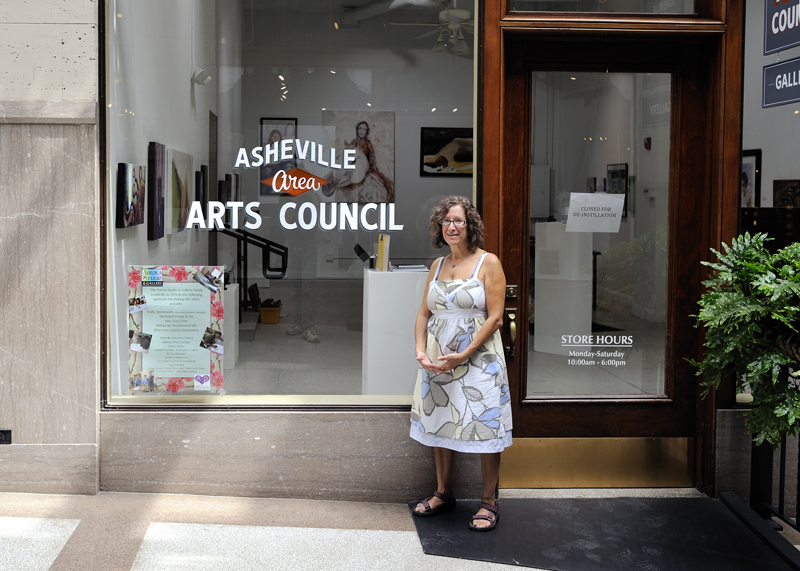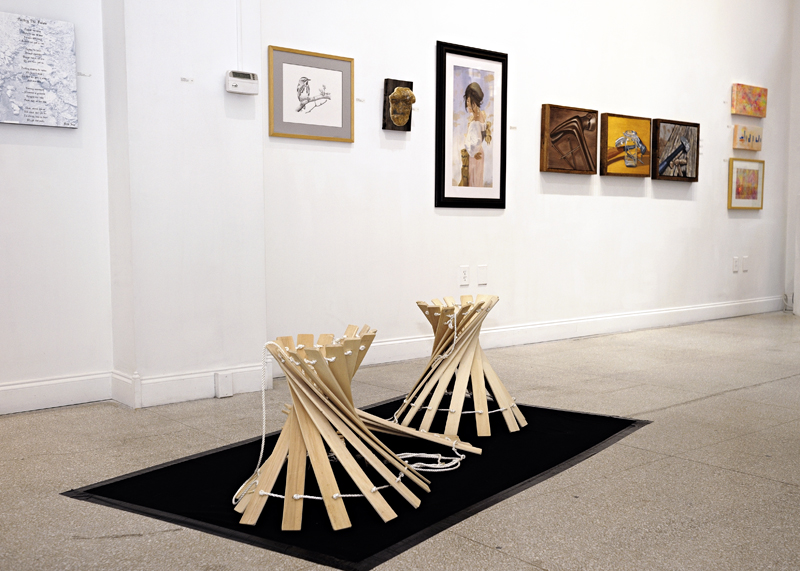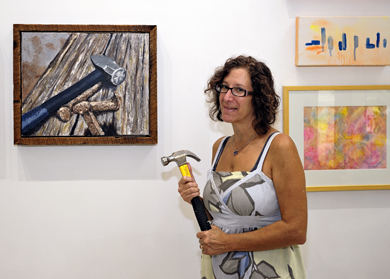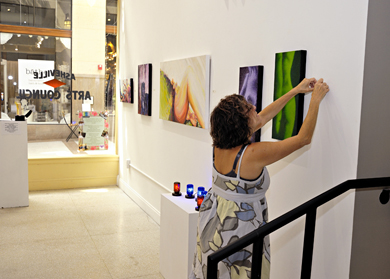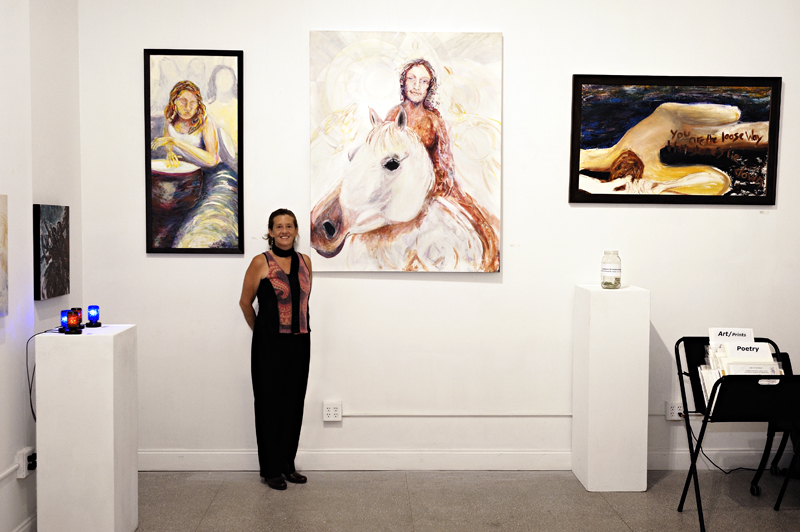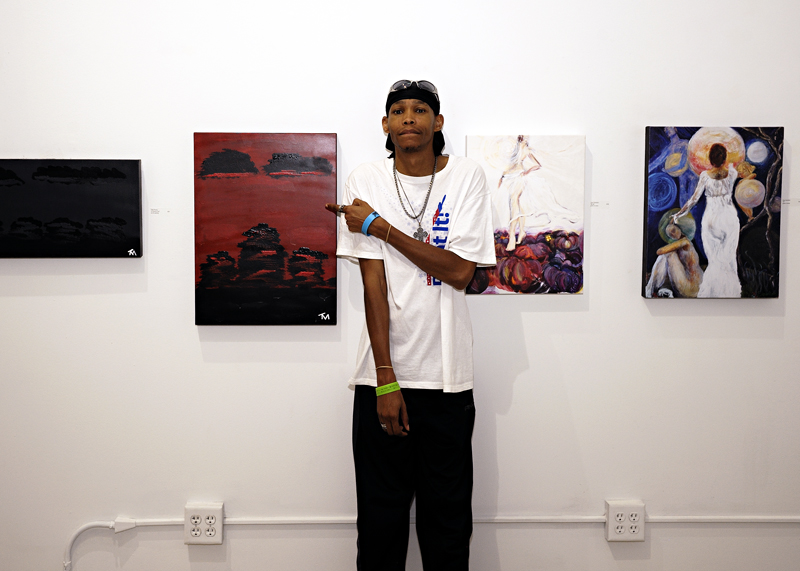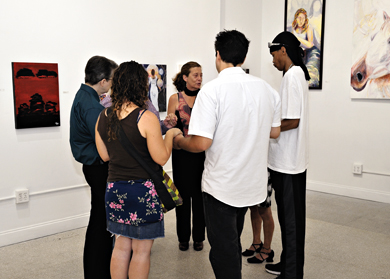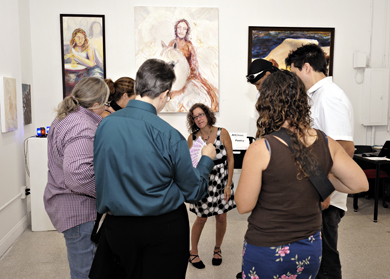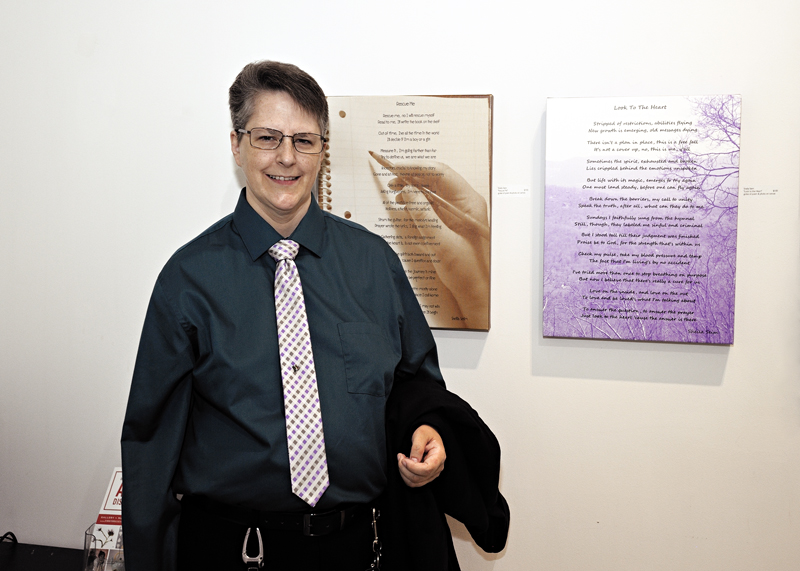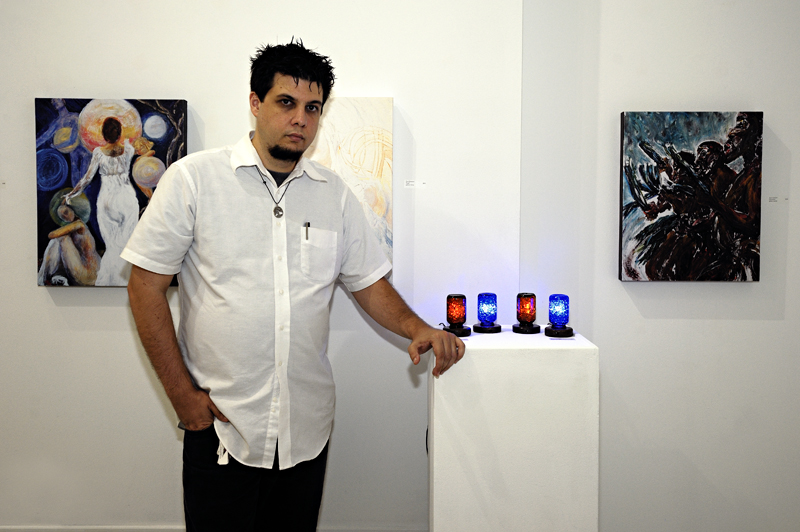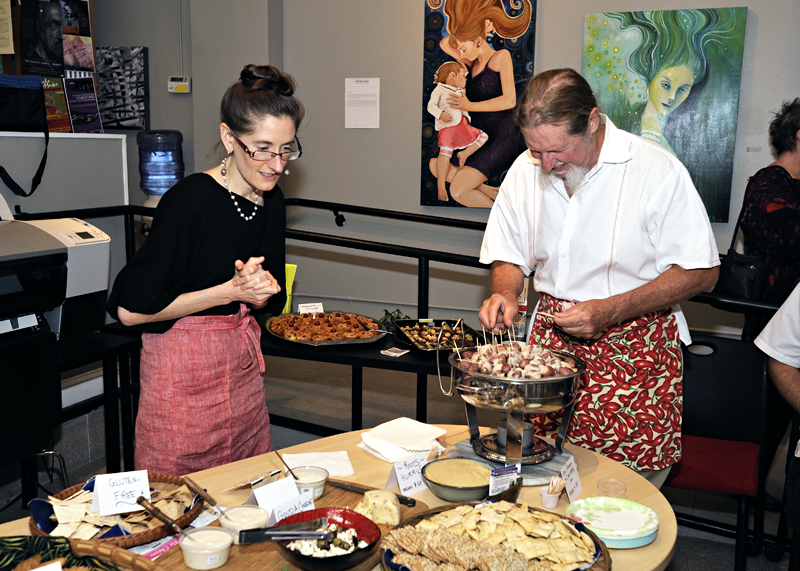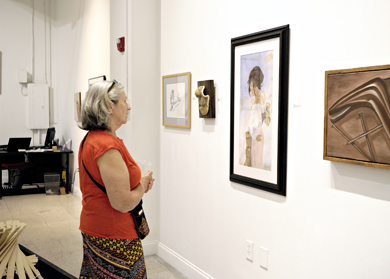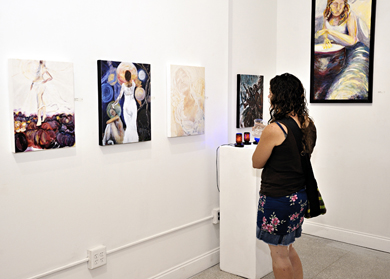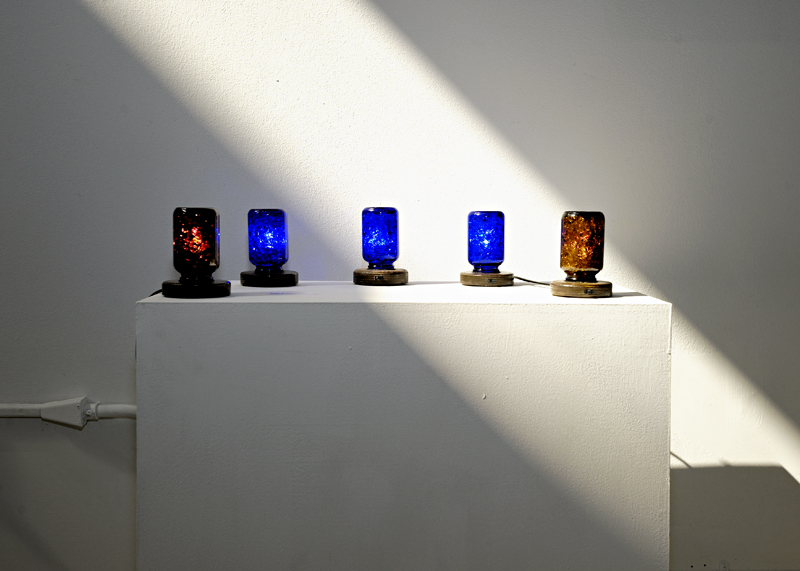Downtown Asheville, North Carolina.
To say that music is a ubiquitous and integral part of Asheville’s heritage is a little like pointing out that the ocean is wet. From bluegrass and folk, to rock, jazz and the blues, it was only a matter of time before all this vibrating energy would overflow from the mountains and local venues, and trickle into the eclectic streets of Asheville, fusing together a blend of rural and urban influences. And Western North Carolina itself is unique in its quilted history of Celtic ballads and African-American slave songs culminating in a crescendo of contemporary American music.
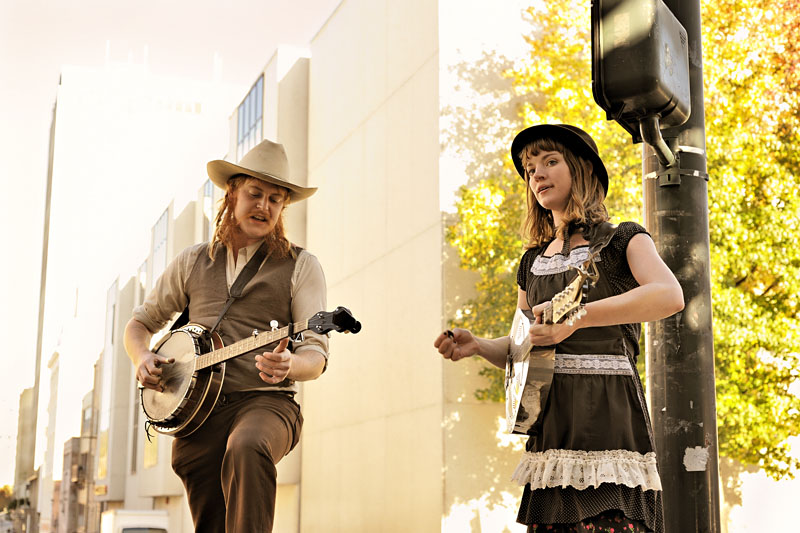
13 Strings and a 2 Dollar Bill, 2012
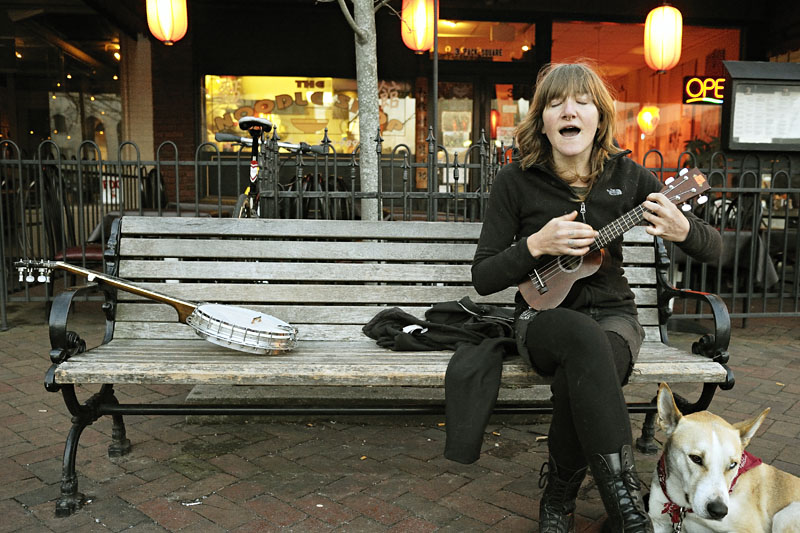
Annabelle, 2013
As with many street performers (or buskers, noun busk·er \ˈbəs-kər\: performers who entertain in a public place for donations), these musicians supplement their income by performing for tips offered by tourists and locals. Some use the opportunity to perform in the streets as a means to promote upcoming shows in local clubs or sell CD’s of their music. Others are merely passing thorough hoping to make a few dollars before moving on to their next destination. A rare few actually subsist on the income generated by these live performances.

Crow Quill Night Owls, 2013
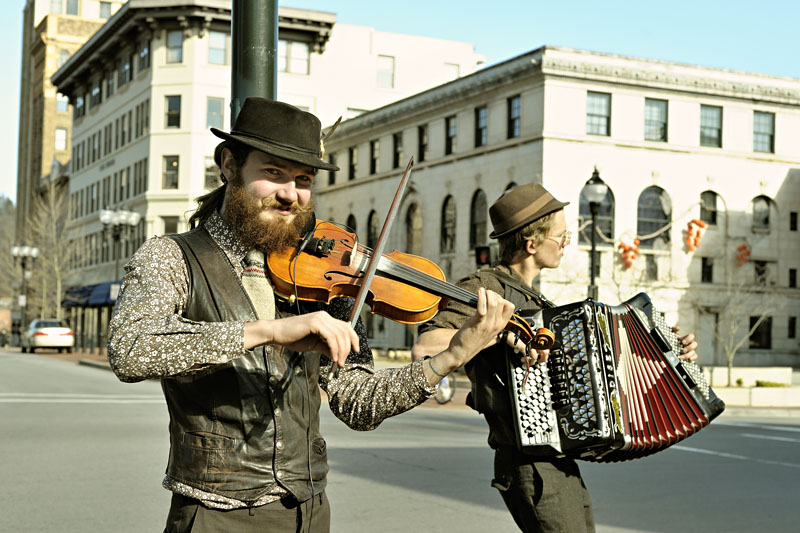
Kjartan and Skogen, 2013
Having been a performing musician myself, I’m always drawn to the talents I come across when downtown. I strive to take photos that I feel capture a timelessness, even some mythology, of the artist. I think back on iconic photographs of famous performers from the first half of the Twentieth-century that been branded into our cultural lexicon. At some conscious level, I am inspired to mimic these mental images while capturing these modern performers.
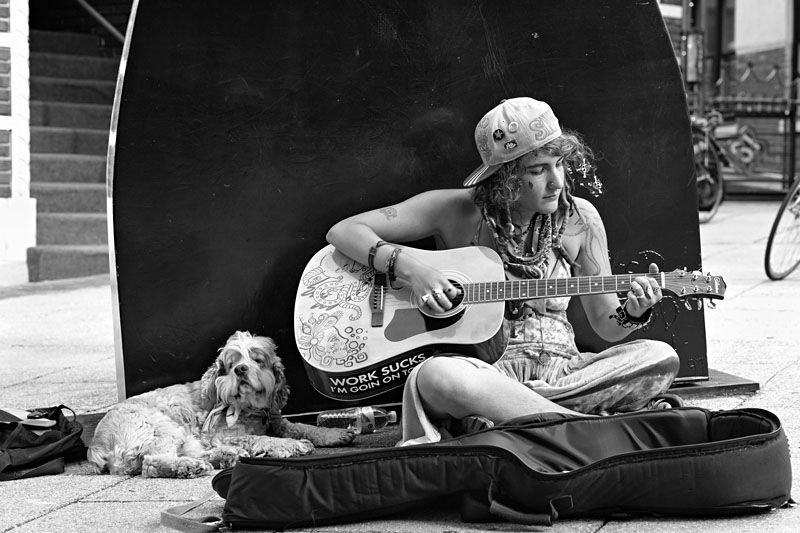
Headlining at the Flat Iron, 2012
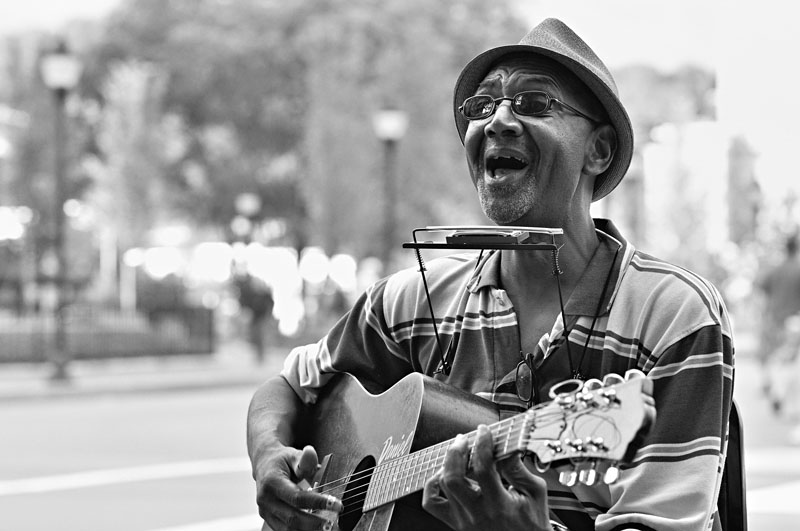
Daniel Rassum, 2009
The music that emanates from the streets in random cycles is what makes up the character and is at the heart of busking in downtown Asheville. When the sidewalks are absent of music, the silence is both deafening and disconcerting.
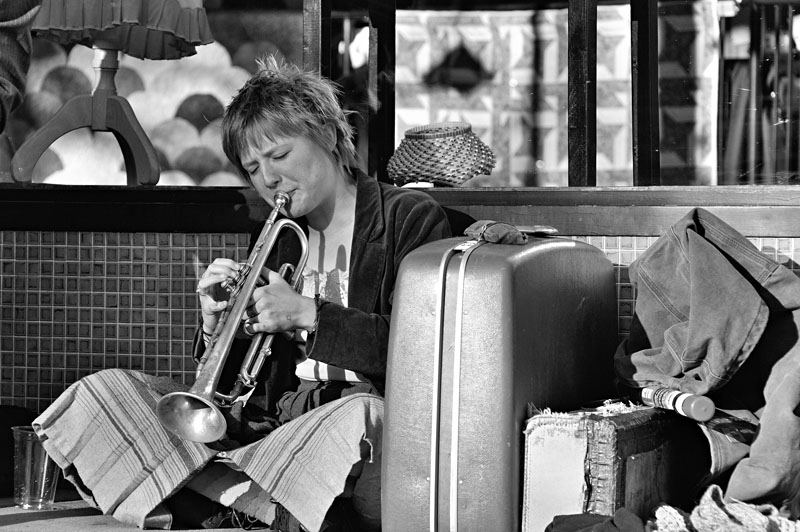
Playing on Haywood Street, 2011
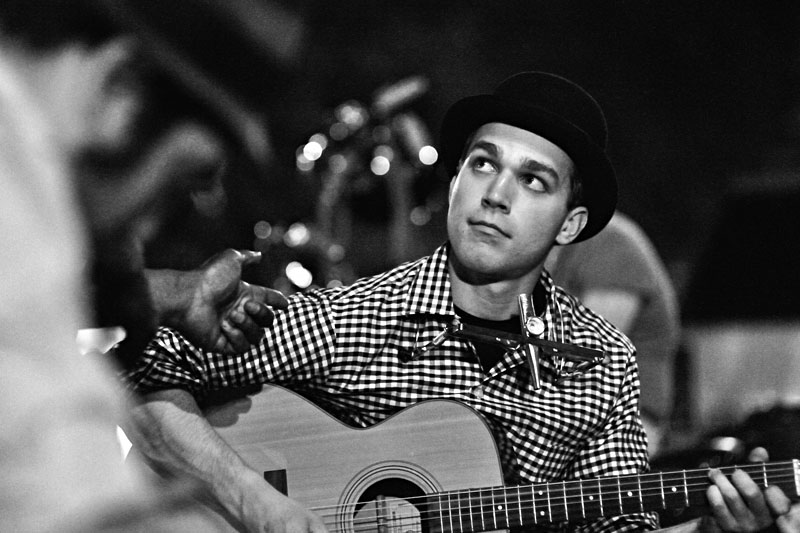
Blues on Broadway, 2010
Recently, there has been some debate by the Asheville City Council regarding the implementation of limits on the amount of sidewalk space buskers can have at their disposal. As a result of a number of transient activity in the last year, a number of regular street performers have been targeted by local authorities in a general sweep to curb sidewalk congestion, even ticketing artists that try to sell their CD’s (which though is not legal to do so, it was generally overlooked by the city of Asheville). The response by the busking community was the creation of the Asheville Buskers Collective that serves as a self governing agency, offering guidance in creating a professional atmosphere for all artists. As a result of the Collective’s efforts (attending city council meetings to voice concerns and suggestions), many of the restrictions that were to be implemented by the city have been taken off the table.
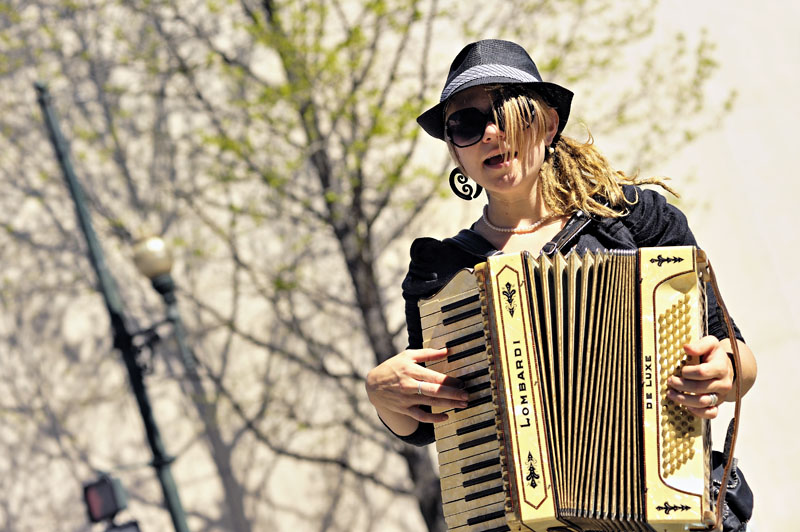
Sparrow, 2011
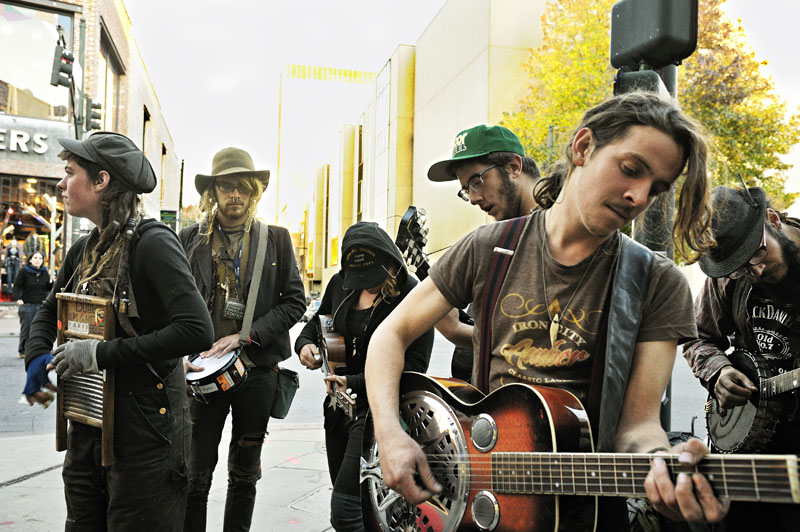
Officer Hotdog, 2013
These images featured in this blog, my book, and those I have yet to publish have been collected over a period of nine years. On both film and digital cameras! Alongside capturing the musicians, I photographed many Living Statues that have come and gone over the years. Many of these performers will never be seen again. I feel fortunate to have been able to capture so many of the artists that have performed on the streets of downtown Asheville. How many performers have I photographed? Likely enough to post a photo of a unique busker everyday for the next several years.
A number of these photos are on display at Lenoir-University just off of Merrimon Avenue in Asheville, and can be found in my book Urban Photography From the Streets Of A Bohemian Mountain Town.
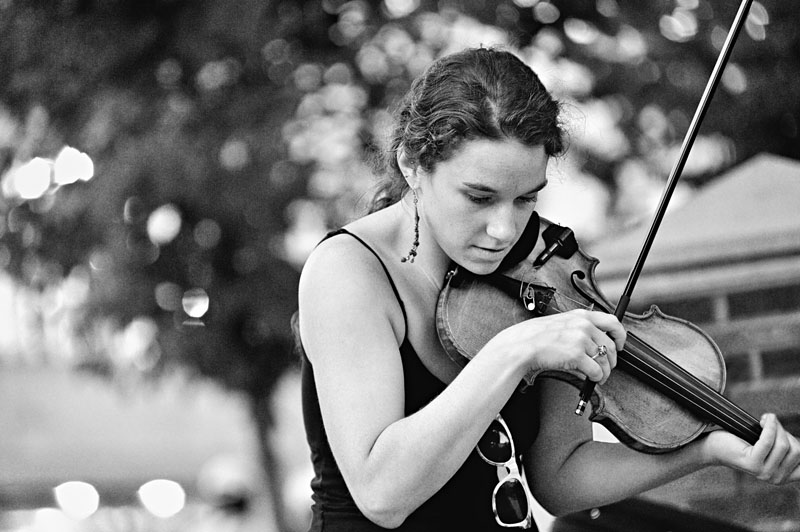
Playing at Pritchard Park, 2010
Since the days of antiquity, street performers have been the soundtrack to life in any city.
Without it, one’s step by misses a beat.
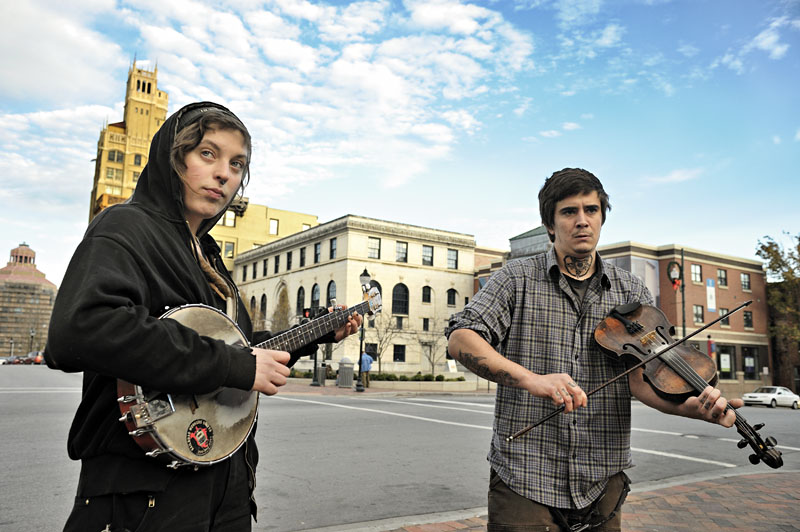
Ruby and Hunter, 2013
All images © Joe Longobardi. All Rights Reserved.
joelongobardiphotography.com/
joelongobardiphotography.com/books
instagram.com/joe_longobardi/

